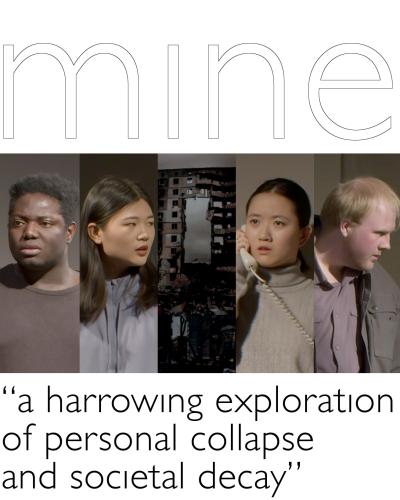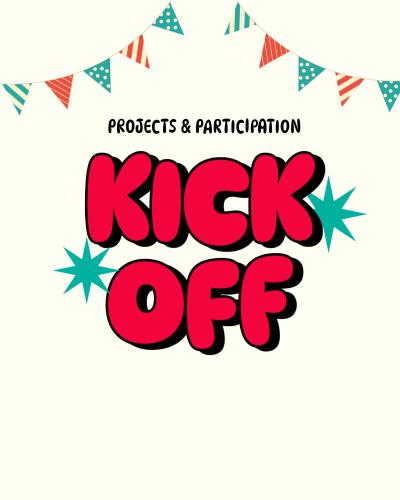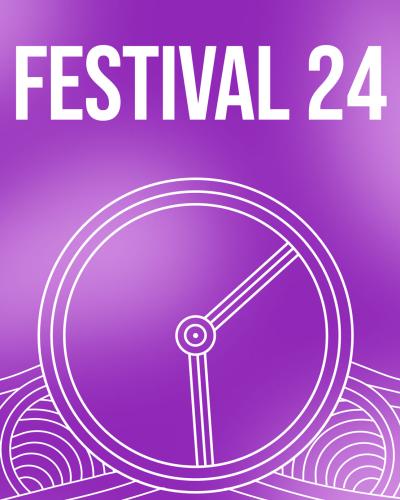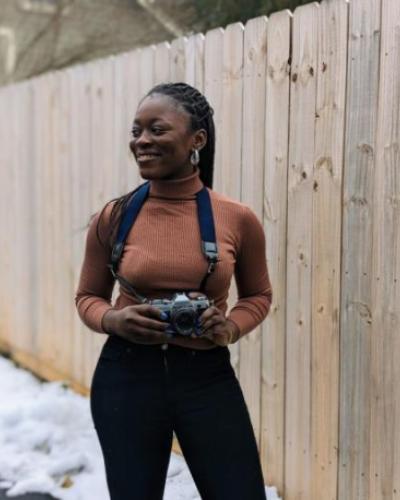PMA Ph.D. student, writer, and film producer, Rejoice Abutsa has published an academic article called "Cultural Pluralisms: Neo-Nollywood and Biyi Bandele’s Ẹlẹ́ṣin Ọba (2022)" in the Journal of African Cultural Studies.
The article can be accessed through Taylor & Francis Online.
Read our interview with Rejoice Abutsa:
What inspired you to create "Cultural Pluralisms: Neo-Nollywood and Biyi Bandele’s Ẹlẹ́ṣin Ọba (2022)?"
I was invited to write this research article as part of research conducted within the Africa Multiple Cluster of Excellence at the University of Bayreuth, funded by the Deutsche Forschungsgemeinschaft (DFG, German Research Foundation) under Germany's Excellence Strategy. This invitation came a few weeks after I attended the Toronto International Film Festival, and a few months after the death of Biyi Bandele (the director of Ẹlẹ́ṣin Ọba). Before its release, there was a collective sense of excitement about this film because it is an adaptation of a work from Nigerian Nobel laureate, Wole Soyinka. While Soyinka has written several plays, Death and the King’s Horseman (now Elesin Oba: The King’s Horseman for film) is arguably his most performed play. There is a strong attachment to the work because it is a true story of colonial arrogance and a man’s failure to satisfy the needs of a cultural ritual in Colonial Ọ̀yọ́. It exhibits the tension of colonial intrusion, self-determination, and communal obligation in such a way that it inserts its audience into the colonial world, and also speaks to the vestiges of such colonial worlds.
I was inspired to get involved because all of these topics interest me. The nature of cultural obligation (correlates with my interest in film industries), self-determination, and colonial/imperial histories filter into my work in different ways. In this case, Biyi Bandele's Ẹlẹ́ṣin Ọba presents a way that we might reflect on these issues through cinema. The complex stylistic negotiation of the film and the historical citation that it makes are important areas that help me think through neo-Nollywood.
What was your approach in crafting this academic publication?
I was quite intent on writing an article that was not a comparative study about how the film adaptation is faithful to its source material (I clarified this approach very early into the article). I think that type of analysis will come from elsewhere. My approach was to think of how the filmmaker animates the duty to culture and the colonial discourse that moves the plot.
When I first saw the film at the Toronto Film Festival, it was clear to me that this was quite a referential film. It references not only the play from which it was adapted but also the Yoruba Travelling Theatre. The film is aware and insists on the cultural histories of theatre in Nigeria and it attempts to negotiate that into a film that will travel across international streaming platforms and film festivals. This means that the filmmaker has to negotiate how the stylistic traits of neo-Nollywood (the new sphere of Nigerian film practice that is quite intentional about how it circulates within an international audience) and the traveling theatre could be relayed on screen. While scholars have explored how the communal approach of the traveling theatre inspires and is embedded within neo-Nollywood, I am interested in how this occurs within the performance on the screen; and how at the point of exhibition, this stylistic approach also invites the audience to partake in the text.
This is a complex undertaking and I reflect on that within the article.
Its (Ẹlẹ́ṣin Ọba) premiere at TIFF, with a mostly Black audience (most of them draped in Nigerian cultural attires), also enunciates the connections I make of this film with the Yoruba Travelling Theatre. The film moved its audience, so much so that they spoke back, gasped, hissed, and had quick moments of audible reflections as the film played on. This layered the screening with quite contextual meaning. I thought it was important to add all of this to the writing process because it is easy to lose that in an attempt to focus on what the text says or how it says it.
Bringing all of this together required asking for all the help that I could get. I got quite the feedback from my colleagues, as well as editors at the Journal of African Cultural Studies. It was important to share this work with colleagues who are not aware of my work; those who are aware of my work but not the cultural context that I am speaking to; and then those who were culturally and experientially knowledgeable of these histories. I also presented a draft of this article at the African Literature Association Conference 2023. It was an intimate and passionate gathering of scholars and I gained insightful feedback.
All of these contributed in such important ways to the final draft.
Finally, it is so interesting that the feedback loop continues after the article has been published. Since the publication came out, I have been involved in quite the academic exchange with scholars from other institutions. I have received some critical notes and generative questions. I have found that people are thinking with and through what I have put out. I think that part of publishing work like this is the impact it will have on my entire research. So far, the engagement has been so generative, and this will further nuance my approach to the dissertation.
What would you like readers of this publication to know about you and your work?
I hope this article jolts readers to think of how cinema is inspired by a wide range of traditions and politics. Oftentimes, it is a complex negotiation between the text, the cultures of production in which the text is domiciled, and also the display of cognition by the filmmaker. In the Nigerian context, loads of historical contexts inform the production of cinema, some of these are generated from local knowledge; and at other times, it is inspired by the ways that Nigerian film culture has become entangled and exposed to other cultures of filmmaking.
Yet, filmmakers insist on pulling together both insider, proximate, and outsider knowledge to construct and transport an industry that is led, changed, negotiated, and transformed by Black players in such a way that is so pivotal to the study of Global (Black) Media. As I have written elsewhere, Nollywood is the most visible form of global Black media because of the ways it constructs, is invested, and mingles with African and Black Diasporic identities. I saw that vividly at the screening of Ẹlẹ́ṣin Ọba, and often recall this in talking about several other screenings that I have attended, and through my embodied and experiential knowledge of the field.





